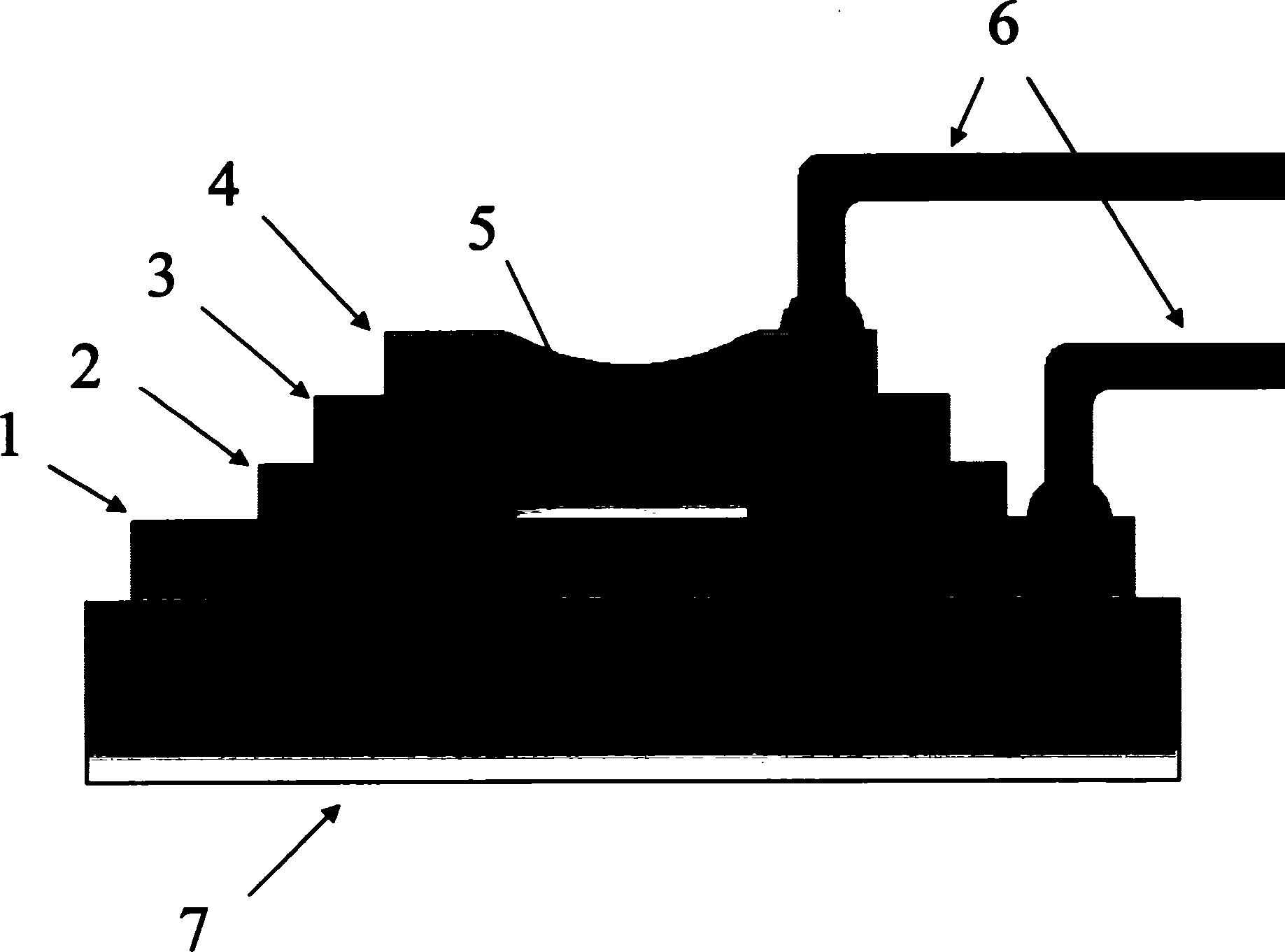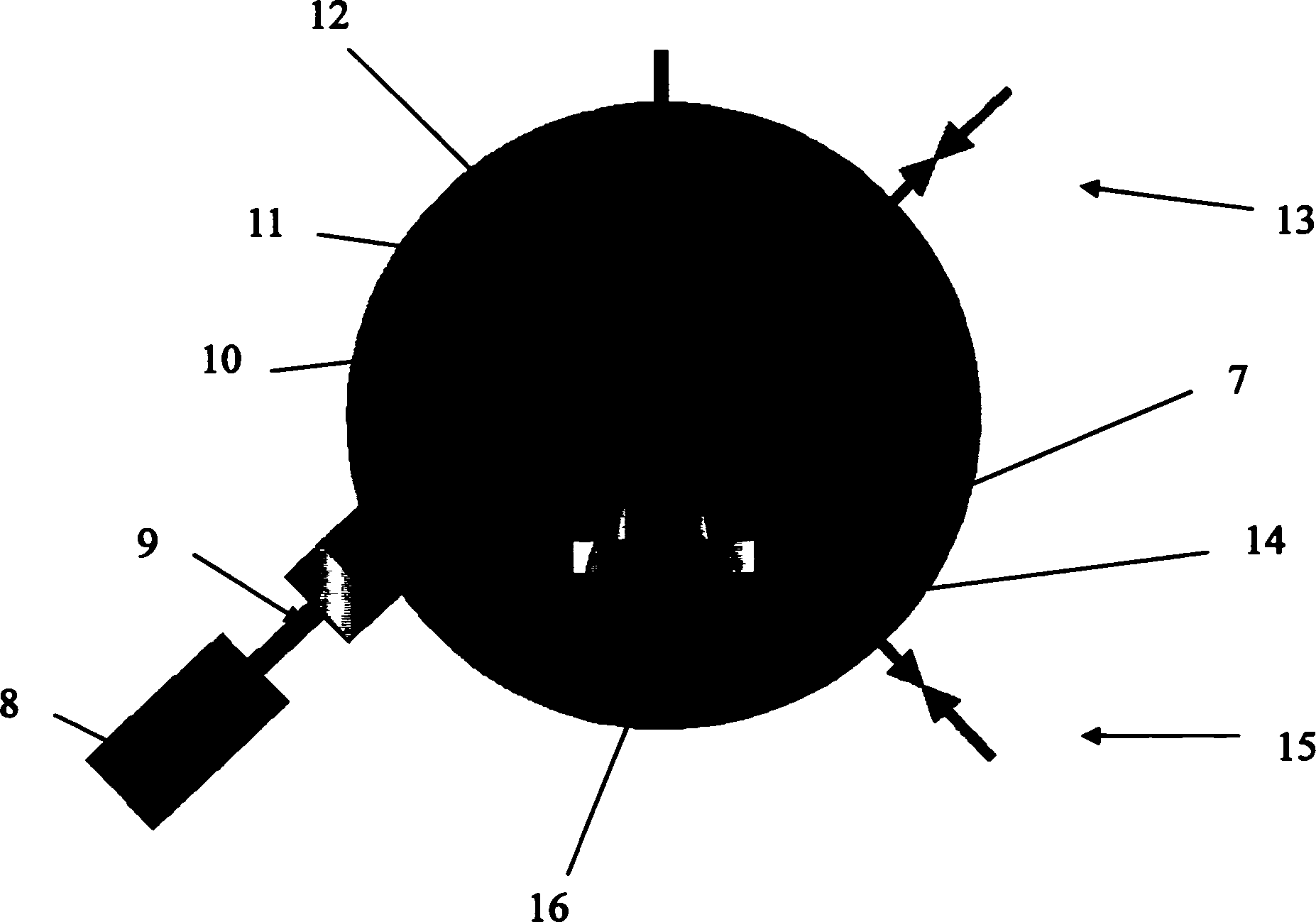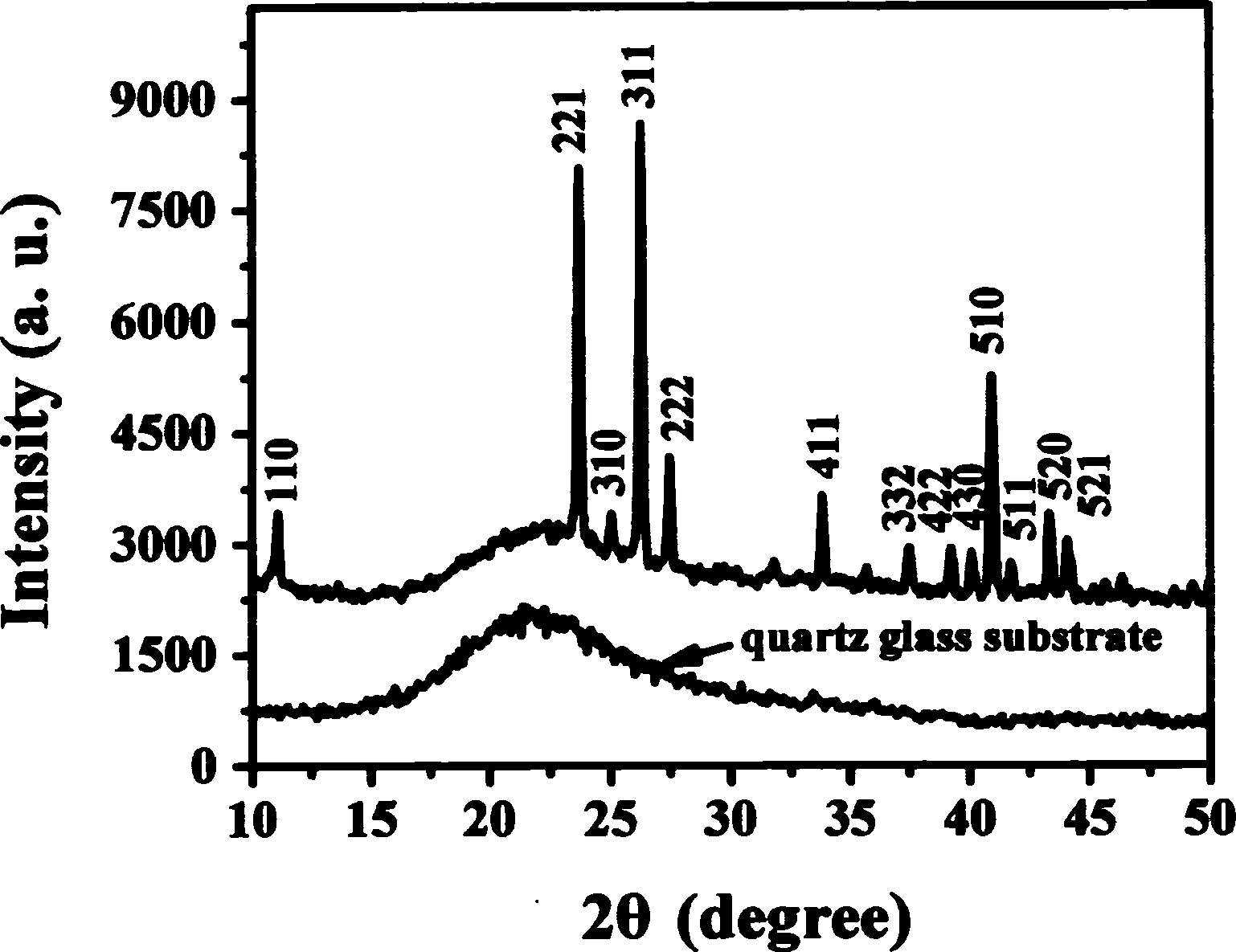Non-volatile memory component based on RbAg4I5 film and producing method thereof
A memory element, non-volatile technology, applied in the field of non-volatile phase change memory element and its preparation, can solve the problems of not being used in large quantities, large energy consumption, inability to achieve fast reading and writing, etc.
- Summary
- Abstract
- Description
- Claims
- Application Information
AI Technical Summary
Problems solved by technology
Method used
Image
Examples
Embodiment 1
[0060] Embodiment 1. Based on solid electrolyte RbAg 4 I 5 The preparation method of the non-volatile phase-change memory element, its preparation steps are as follows:
[0061] (1), deposit non-reactive electrode film 1 with pulse laser deposition method on silicon chip substrate 7, its material is platinum, and the thickness of non-reactive electrode film 1 is 200 nanometers;
[0062] (2), utilize radio frequency magnetron sputtering method to deposit one deck insulating layer 2 on non-reactive electrode film 1, the material of insulating layer is silicon dioxide, and its thickness is 100 nanometers;
[0063] (3), in the insulating layer 2, utilize the focused particle beam etching method to process a micropore 5 with a diameter of 200 nanometers, exposing the non-reactive electrode film 1 at the bottom;
[0064] (4) Cover the substrate with the microholes 5 with a metal mask that is engraved with a hole with a diameter of 0.5 mm, and align the holes of the mask with the h...
Embodiment 2
[0069] Embodiment 2. Based on solid electrolyte RbAg 4 I 5 The non-volatile phase change memory element and the preparation method, the specific preparation steps are as follows:.
[0070] (1), deposit non-reactive electrode film 1 with magnetron sputtering method on quartz glass plate substrate 7, its material is gold, and the thickness of non-reactive electrode film 1 is 1 micron;
[0071] (2), utilize radio frequency magnetron sputtering method to deposit one deck insulating layer 2 on non-reactive electrode film 1, the material of insulating layer is silicon dioxide, and its thickness is 200 nanometers, uses silicon dioxide ceramic target during sputtering, Argon with a pressure of 10Pa is used as the sputtering gas, and the minimum temperature of the lining is 80°C;
[0072] (3), utilize the electron beam etching method to process the micropore 5 that diameter is 10 microns in insulating layer 2, expose the gold non-reactive electrode film 1 of bottom;
[0073] (4), co...
Embodiment 3
[0078] Embodiment 3. is used to prepare the solid electrolyte RbAg of non-volatile phase-change memory element 4 I 5 The preparation method of film material, its preparation steps are as follows:
[0079] (1) RbAg 4 I 5 The single-phase ceramic target (10) is made of RbAg 4 I 5 Prepared by powder sintering: melting a mixture of 80mol% AgI and 20mol% RbI at 400°C, quenching the mixture to room temperature with water, grinding the obtained block into powder and heat treatment at 150°C for 14h, then RbAg 4 I 5 The powder is statically pressed at room temperature under 14MPa into a Φ21×4mm disc, and the disc is sintered at 150°C for 8 hours in a box-type electric furnace;
[0080] (2) RbAg 4 I 5 The single-phase ceramic target (10) is fixed on the target table (11) of the pulse laser deposition film forming system, the substrate (7) is fixed on the substrate table (14), and the resistance heating furnace (16) is arranged on the substrate table ( 14), they are all placed i...
PUM
| Property | Measurement | Unit |
|---|---|---|
| thickness | aaaaa | aaaaa |
| wavelength | aaaaa | aaaaa |
| energy | aaaaa | aaaaa |
Abstract
Description
Claims
Application Information
 Login to View More
Login to View More - R&D
- Intellectual Property
- Life Sciences
- Materials
- Tech Scout
- Unparalleled Data Quality
- Higher Quality Content
- 60% Fewer Hallucinations
Browse by: Latest US Patents, China's latest patents, Technical Efficacy Thesaurus, Application Domain, Technology Topic, Popular Technical Reports.
© 2025 PatSnap. All rights reserved.Legal|Privacy policy|Modern Slavery Act Transparency Statement|Sitemap|About US| Contact US: help@patsnap.com



